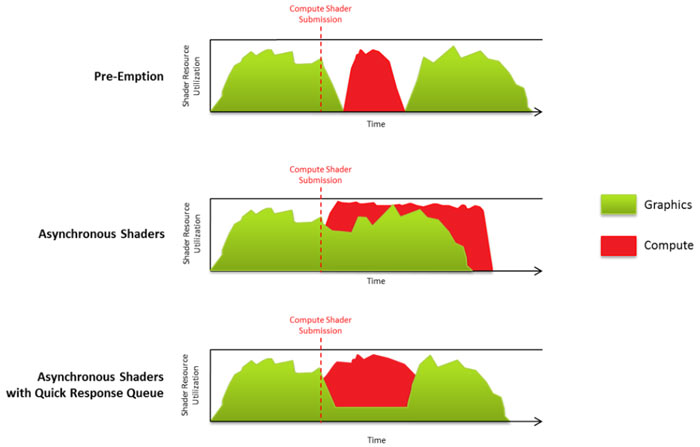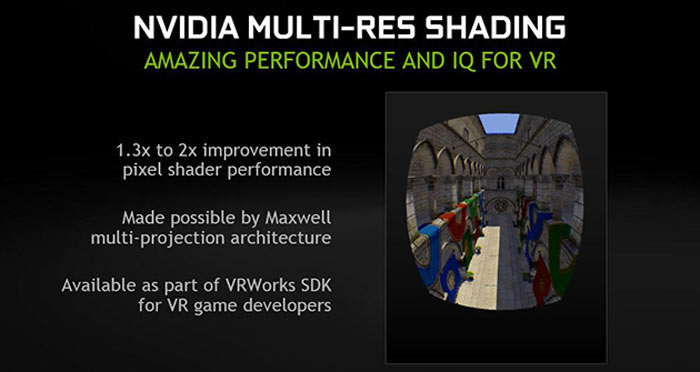As the Oculus Rift started to become physically available yesterday, both AMD and Nvidia released updated graphics card drivers. The idea was to provide extra support and features for using this HMD, as people embark on their first tentative virtual reality escapades. To that end AMD released Radeon Software Crimson Edition 16.3.2 and Nvidia released the GeForce Game Ready 364.72 WHQL drivers.
AMD drivers
Radeon Software Crimson Edition 16.3.2 highlights include the support for Oculus Rift SDK v1.3, HTC Vive, and the AMD Radeon Pro Duo. Crossfire users got access to two further profiles; one for Everybody's Gone to the Rapture and another for Hitman in DirectX 11.
However the page of official release notes misses an important new technology in the new drivers, a feature called the 'Quick Response Queue', or QRQ from now on. This scheduling technique, enabled by AMD's Asynchronous Compute Engines being programmable and capable of resource scheduling in hardware, enhances VR rendering.

Oculus uses Asynchronous Time Warp (ATW) to reduce latency and prevent image judder on the HMD, and AMD's QRQ is tasked with holding the ATW shader. In AMD's own words "Putting the ATW shader on this queue gives it priority access to the GPU’s compute units, making it far more likely to complete before the next refresh even when it is submitted late in each frame interval. And since it doesn’t need to pre-empt other graphics tasks already in flight, it allows the GPU to start working on the next frame quickly."
Nvidia drivers
Nvidia's GeForce Game Ready 364.72 WHQL drivers "are optimized for the Oculus Rift and HTC Vive Virtual Reality headsets," as well as VR games such as Chronos, Elite Dangerous and EVE: Valkyrie. Nvidia hasn't devoted this driver solely to VR as other new games like Dark Souls III, Killer Instinct, Paragon, and Quantum Break all get the game-ready driver optimisations in this driver.

In VR applications Nvidia says that 364.72 WHQL will minimize latency, improve performance, "and add support for our newest VRWorks features that further enhance your experience". VRWorks was discussed and demonstrated at GDC2016 a couple of weeks ago. Its effectiveness in VR applications stems from the following techniques; the Multi-Res Shading rendering technique, Context Priority GPU scheduling, Direct Mode rendering, Front Buffer rendering and VR SLI (if you have multiple GPUs).














